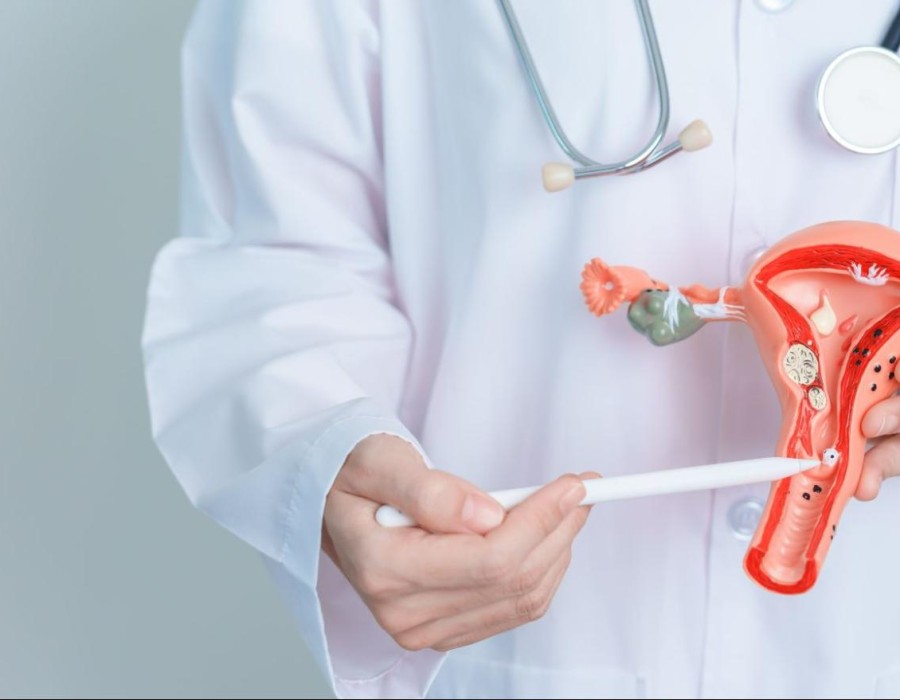Introduction:
Fibroids, also known as uterine leiomyomas, are noncancerous growths that develop in the uterus, affecting millions of women worldwide. While fibroids are common and often asymptomatic, they can cause significant discomfort, pain, and reproductive challenges for some individuals. Fortunately, various treatment options are available to address fibroids and improve quality of life. Let's explore the causes, symptoms, and comprehensive treatment approaches for fibroids.
Understanding Fibroids:
Fibroids are benign tumors that develop in the muscle tissue of the uterus, ranging in size from small, pea-sized nodules to large, grapefruit-sized masses.
The exact cause of fibroids is unknown, but factors such as hormonal imbalances, genetic predisposition, and estrogen and progesterone levels contribute to their growth.
While many women with fibroids remain asymptomatic, others may experience symptoms such as heavy menstrual bleeding, pelvic pain, pressure or fullness in the lower abdomen, frequent urination, and reproductive issues such as infertility or recurrent miscarriages.
Diagnostic Evaluation:
Diagnosing fibroids typically involves a combination of medical history review, pelvic examination, imaging studies (ultrasound, MRI), and laboratory tests to rule out other conditions.
Imaging techniques help determine the size, location, and number of fibroids, guiding treatment decisions and management strategies.
Treatment Options:
Treatment for fibroids depends on various factors, including the severity of symptoms, the size and location of fibroids, reproductive goals, and patient preferences.
Conservative management: For asymptomatic or mildly symptomatic fibroids, watchful waiting with regular monitoring may be recommended, especially for women nearing menopause when fibroids often shrink on their own.
Medications: Hormonal therapies such as birth control pills, gonadotropin-releasing hormone (GnRH) agonists, or progestin-releasing intrauterine devices (IUDs) can help alleviate symptoms such as heavy bleeding and pelvic pain by regulating hormonal levels.
Minimally invasive procedures: Several minimally invasive techniques are available to treat fibroids while preserving the uterus and fertility, including:
Uterine artery embolization (UAE): A nonsurgical procedure that blocks blood flow to fibroids, causing them to shrink and alleviate symptoms.
Magnetic resonance-guided focused ultrasound surgery (MRgFUS): A noninvasive procedure that uses high-intensity ultrasound waves to destroy fibroids with precision, without the need for incisions or anesthesia.
Laparoscopic or robotic-assisted myomectomy: Minimally invasive surgical techniques to remove fibroids while preserving the uterus, ideal for women seeking fertility preservation.
Surgical options: In cases where conservative or minimally invasive treatments are ineffective or not feasible, surgical interventions such as hysterectomy (removal of the uterus) may be recommended, particularly for women who have completed their childbearing.
Comprehensive Care and Support:
Throughout the diagnostic and treatment process, patients with fibroids benefit from personalized care, education, and support from a multidisciplinary team of healthcare providers, including gynecologists, radiologists, fertility specialists, and mental health professionals.
Patient education plays a crucial role in empowering individuals to make informed decisions about their treatment options, understand potential risks and benefits, and actively participate in their care.
Conclusion:
Fibroids are a common gynecological condition that can significantly impact women's health and quality of life. With advancements in medical technology and a personalized, multidisciplinary approach to care, individuals with fibroids have access to a wide range of treatment options tailored to their needs and preferences. By working closely with healthcare providers and taking an active role in their care, women with fibroids can achieve symptom relief, preserve fertility, and reclaim control over their health and well-being.





Comments